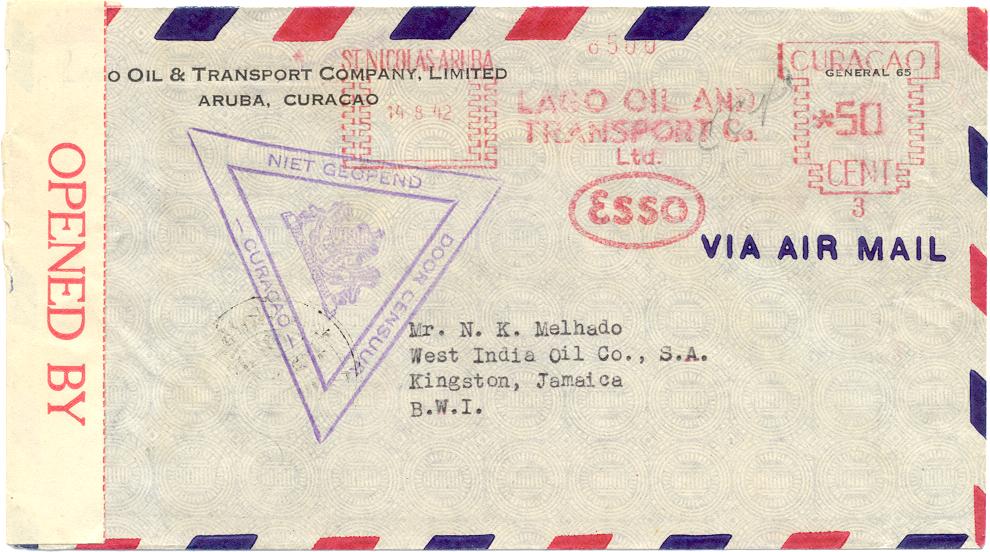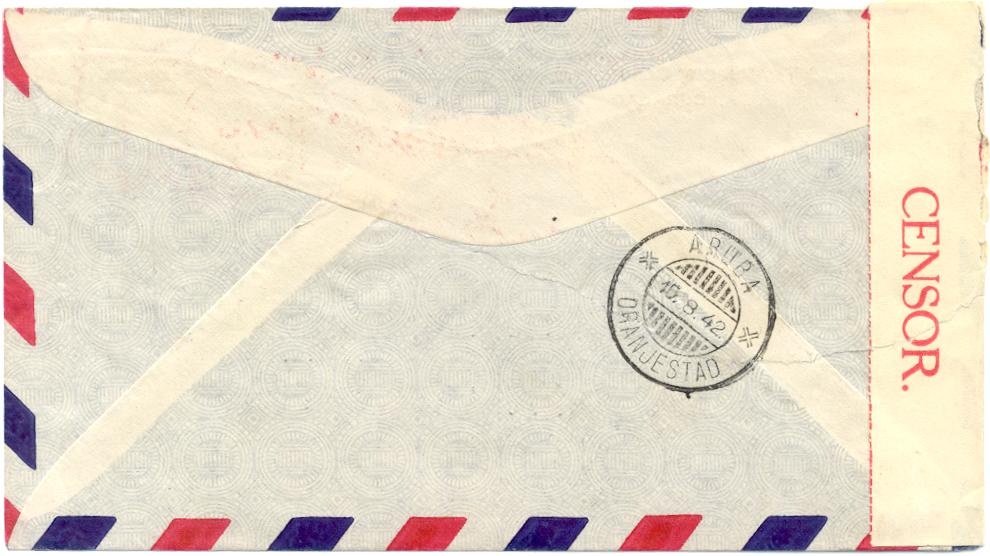Because of an envelope that went on sale on eBay I contacted Jan Schelling in Holland and we exchanged information about the Lago Post Office and the interment camp on the island of Bonaire that housed persons from occupied European countries during World War II. My mother was Danish and she and I (I was an American by birth but only two yeas old so I was to go with my mother as were many other Europeans in Lago Colony to the interment camp. because of intervention by Lago Oil we were not shipped to Bonaire)
During this exchange of information I told Jan that my father was a stamp collector and low and behold he has an envelope that was addressed to my dad in his collection.
Thanks Jan, for all this wonderful information.
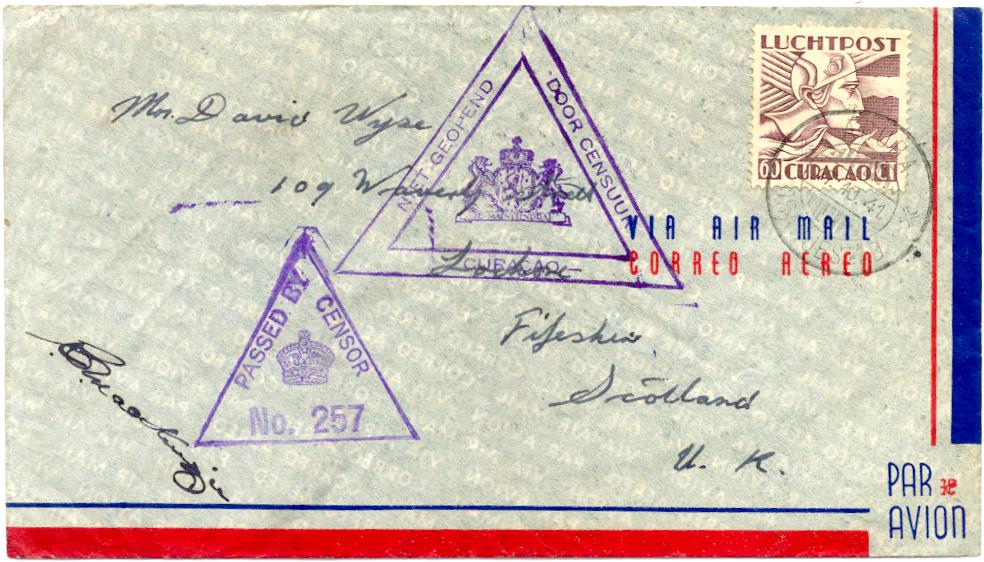
The cover was censored by the British military censor No. 257 (only censor number known from Aruba) and countersigned by the commanding officer. The civilian censor at the Oranjestad censor office did not bother to open the envelope as he placed the ‘NIET GEOPEND DOOR CENSUUR CURAÇAO’ (= not opened by Curaçao censorship) on front. Aruba was during the war part of the ‘Colony of Curaçao’.
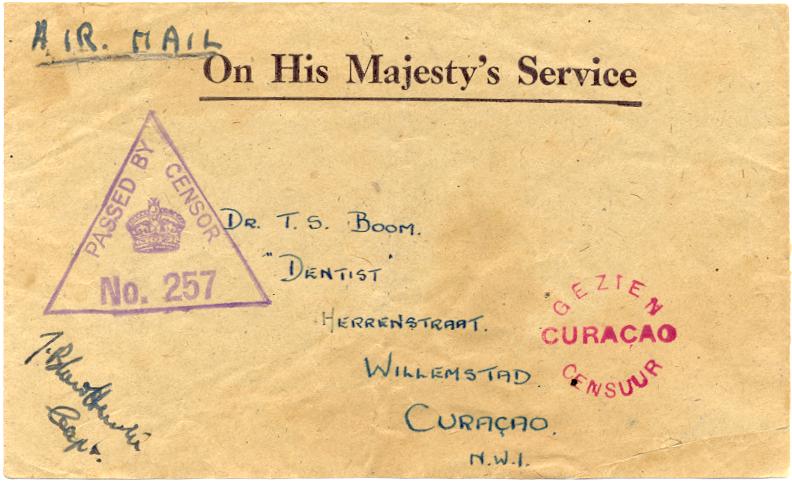
Note in the address ‘Herrenstraat’, should have been ‘Heerenstraat’ (= Gentlemen’s Street), ‘Herren’ is the German equivalent. A painful mistake at that time !
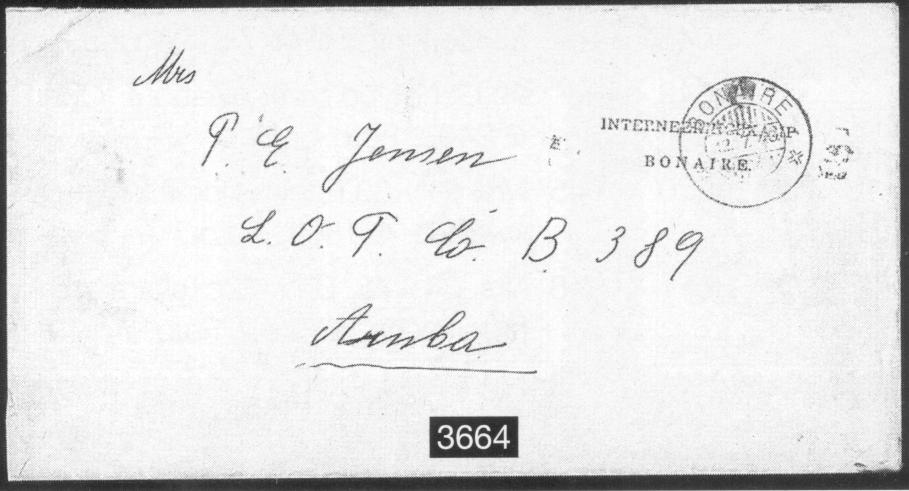
It is a small cover addressed to: "Mr. P.E. Jensen, c/o PAN-AM (Lago Oil & Transport Comp), Aruba, Ned. West Indies". The cover was sent from the Internment Camp on Bonaire (no sender's name, only "Bonaire, Prison Camp, N.W.I.") and has an 'INTERNEERINGSKAMP/BONAIRE' handstamp (in violet) on front. On the rear is a 'POSTCENSUUR/(coat of arms)/CURACAO' resealing label (the rarest of all labels used in Curacao) with handwritten numbers "6" and a very clear 'ARUBA/St.NICOLAAS' arrival date-stamp of 28.5.40. This is one of the earliest censored covers known from Curacao.
Dag meneer,
Jan
Dan,
Herewith scans of a cover that could have been cancelled at the Lago Post Office. It has a 'Francotype' postal meter with Lago and Esso text. This type of cancellation is rather scarce, the Lago example is one of three used in the Netherlands Antilles before 1950, and the only one from Aruba. It was not used very frequently, as I have only seen two copies.
The cover was sent to an Oil Company in Jamaica, so it is really 'business mail'. It was forwarded by way of the Oranjestad Post Office, and not opened at the Oranjestad censor Office ('NIET GEOPEND' handstamp). But it was opened by the censor in Kingston (nice orange-red lettered label on the left). About the postal rate I am not sure: the usual postal rate for airmail (up to 5 grams) was 20 cent, but sometimes a 25 cent was used (also on airmail from the Hollandsche Bank Unie). In this case the envelope with contents must have had a weight between 5 and 10 grams, as the double air rate is applied.
Note that in the date-mark the (English) name ST. NICOLAS is used, and not the 'official' (Dutch) name ST. NICOLAAS.
Greetings,
Jan
